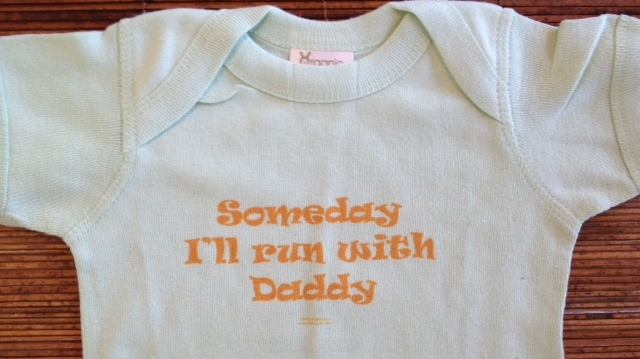It’s true: last Sunday, I won the Potomac River Run Marathon in 2:50:27.
Before you think that this is super impressive, know that it was a small local race capped at a mere 350 runners. So I didn’t exactly win a major race…

Now, race reports can be valuable when they illustrate some key lessons and I think this is one of those times. Besides, many of you have written asking for this update so here goes!
First off, I had no intention of winning this race. My goal was very simple: to qualify for Boston by 10 minutes and run just under 2:55.
Sure, I’ve run 2:39 and could have run faster. But my training hasn’t been 100% and the recovery is too long for a max effort marathon. The BQ was all I wanted.
If you want to see the “official” write-up on the Washington Running Report (with a great photo of yours truly) see the news story here.
Lesson #1 – Pacing, Pacing, Pacing
When the gun whistle went off I surprised myself with a 6:18 opening mile. I was with three other runners who were targeting around 3 hours so this was too fast for me and WAY too fast for them.
That’s how you fail at marathon pacing: start the race over 40 seconds faster per mile than your goal pace…
After the faster first mile, I slowed down to about 6:30-6:35 per mile (which was still under my goal pace of 6:40) for the rest of the race. My slowest mile was 6:47, not including the miles where I stopped briefly. More on that later…
No matter what effort level you’re racing – a max effort PR attempt, a “moderate” run, or simply an easy-paced marathon to prep for an ultra – pacing is critical. Stay within the right range and start a little slower than your goal pace.
Less than halfway through the race I was in 3rd place and another runner encouraged me to catch up to the leaders. I thanked him but thought, “The race hasn’t even started yet.”
Marathons are a waiting game until well after the halfway point. Anyone can be a hero through 12-14 miles. Only the truly prepared can crush the last 10k of a marathon.
Lesson #2 – Trust Your Training
For some reason, I was really nervous before this race. Even though it wasn’t supposed to be “hard,” 26.2 miles is still 26.2 miles.
When fatigue started to creep in around the 16th mile, 6:30 pace wasn’t easy any more. I actually had to work for it and doubt saturated my brain. Could I keep this up for another 10 miles? What if I lose the extra time I’ve banked so far?
Conquering doubt is a required skill for any marathoner – you have to believe in your abilities. If you’ve done the training, the race is just a logical extension of that training.
In the SR Boot Camp, there’s an entire lesson on how to increase your confidence by trusting your training. It’s a valuable strategy that is more important for marathoners than any other type of runner.
Remembering the 21 mile long runs with 3-4 miles at 6:00 pace or faster made me believe that I could maintain my pace. And after defeating those inner doubt-demons, my final two miles were a slight negative split in 12:50!
Lesson #3 – Fueling Still Matters
Alright, I wasn’t redlining like I was at Philadelphia. But I still carb-loaded and had four gels during the race.
26.2 miles is a long way even if you’re running far above your lactate threshold and burning a smaller percentage of carbohydrate. Besides, why take any chances?
I’m bullish on carb-loading for marathoners because the research shows it works. And you don’t have to go through the old-school depletion protocol, which can leave you sick or hurt in the days before your race.
Instead, focus on ingesting 7-10g of carbs per kg (or 2.2 pounds) of body weight in the 1-2 days before your race. A good carb-loading schedule will fully stock your liver and muscles with fuel so you can finish strong.
Judging from how I felt during the last two miles (they were 6:24 and 6:26), I’m happy with how things went.
Lesson #4 – Pay Attention to Your Body
While my finish time exceeded expectations and my place was a welcome surprise, I didn’t feel great during the final 10 miles because of my left IT Band. It started to get tight around the 15 mile mark and there was even a small amount of pain.
I had been running under goal pace so I knew I had almost four minutes to “play with” and still get my BQ-10 goal. Taking advantage of that, I stopped three times during miles 19, 22, and 24 to do a few leg swings to loosen up my hip and glute.
Each stop only slowed me down about 30 seconds and I still ran between 7:01 – 7:12 for these miles. But it gave me a good scare!
During any marathon you’ll experience an increasing level of soreness and fatigue. It’s your job to monitor what’s normal and what can lead to a real injury. For me, a few preventive measures were all that was needed to make sure my ITBS didn’t recur and I could finish strong.
Lesson #5 – The Course Matters
If this was my “A” race goal, then I would have failed at running a PR. There’s no question about it.
The terrain was a rocky dirt path with lots of loose gravel.
The course was open to the public and I had to weave around pedestrians.
A double out-and-back loop created three 180 degree turns around cones (and a lot of boredom).
If you’re shooting for a stretch goal, the conditions need to be as perfect as possible.
Dirt roads are great for training, but the uneven surface isn’t ideal for performance. Weaving around pedestrians walking their dog can slow you down. Meager crowd support on a 6.55 mile stretch of trail – that you repeat four times – can be mentally exhausting.
Choosing a major road race has its drawbacks, but there are obvious benefits that help propel you to set a personal best: the crowd support, the more consistent running surface, and a less mind-numbingly boring course.
Be smart about the type of race you choose and be realistic about what you can accomplish given the environment. There are a lot of “non-fitness” aspects of a race that can help you succeed – or slow you down.
Announcement #2: I’m Going to be a Dad!

In less than two months, I’ll be a dad!
My wife and I are expecting our first child at the end of June and couldn’t be more excited. We decided to not find out the sex of Baby Fitz so I haven’t bought pink or blue baby running shorts yet…
About a month ago I was toying with the idea of a hilarious April Fool’s Day post – well, at least to me – about how I was going to raise the perfect athlete with strict training schedules for my wife and then for baby.
Well, I tested the idea on a few friends and they all thought it was horrible. Why am I cursed with this advanced sense of humor?
Anyway, I’m sure Baby Fitz is excited to meet the SR community and watch dad do a lot of core work in the living room!